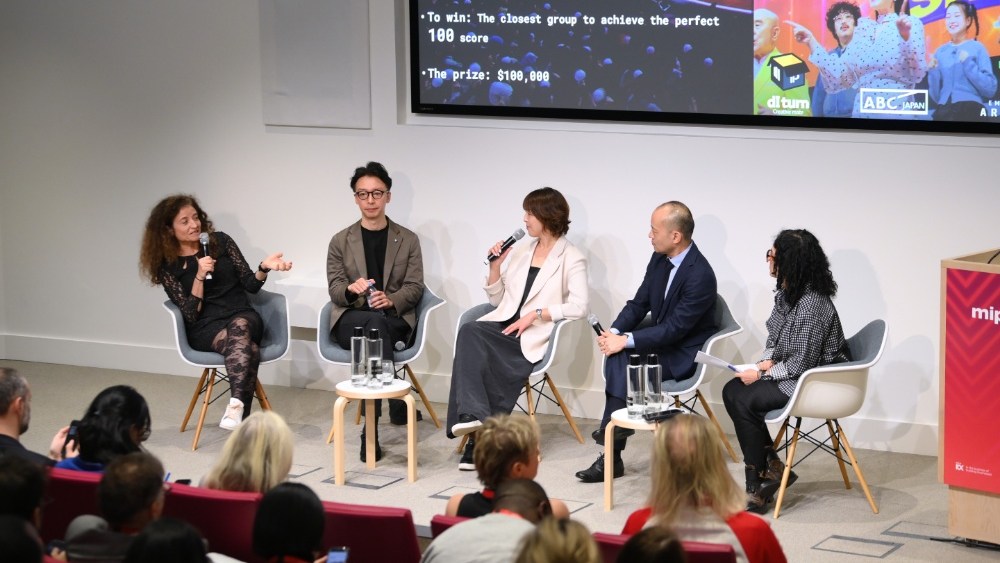A group of Japanese media executives and global collaborators gathered in MIP London to debate the panoramic view of the ever-evolving Japanese content material in international markets in scriptless codecs, documentaries and scripted dramas.
The conference highlights how Japanese creativity can discover new avenues to global success through strategic partnerships and content materials adapted to international audiences.
Fotini Paraskakis, an Asian-based material incubator empire Arcadia, details her company’s collaboration with ABC (Asahi Broadcasting Company) Japan and Artistic Powerhouse Diturn, a South Korean company that creator Park Wonwoo, at the “100” On this, it is a musical leisure gift, with a novel format, and the age of the venue contestants should be 100.
Paraskakis defines it as a musical tee collaboration, and it is a music entertainment created by ABC Japan, Diturn and ourselves. “This is one of the many first scriptless moves between South Korea, Japan and us, because The third party is globally.”
ABC Japan's Nami Komo highlights the advantages of Japanese producers' storytelling for these collaborations. “Our experience has always been storytelling. At ABC Japan, we have done all kinds of touching feelings again in Japan. So we think the mix between gamification and storytelling can be very relevant.”
Every Japanese and Korean currently has effectively premiered, each model tailors its market – the Japanese model specializes in human stories and celebrations, while Korean adaptability emphasizes a larger gamified component.
NHK's Shin Yasuda will travel to Los Angeles to serve as government producer for Emma Ryan Yamazaki, the Oscar-nominated documentary “The Equipment of the Heart of the Fast Coronary Artery” mentions documentaries such as “Made in the Japanese” The success of this is a collaboration between NHK and the impartial filmmaker Yamazaki.
“This could be a great example of a documentary, which is indeed a 50/50 collaboration,” Yasuda said. The feature-length documentary follows children in the Tokyo Public Basic Teacher System, examining how Japanese identity and cultural behavior are done through training shape.
Yasuda's famous co-production allows NHK to “enhance our creativity and diversify our storytelling” while acknowledging that completely different changes in content materials are created for families and global audiences. For Japanese audiences, the documentary highlights the training of the entire Covid-19 restriction, while the global model centers on the academic system itself.
Fumi Nishibashi, seven manufacturing companies at TBS (Tokyo Broadcasting System), outlines how Japanese comic diversity can discover international success through streaming platforms and global partnerships.
“Before now, the issues or obstacles introduced by Japanese scripts should be revealed to the journey, but because the components may be the right of global streaming platforms, it may be within the development of expertise, it may be VFX, or it may be due to global partners Relationships, we will bring these IPs or Japanese companies to the world,” Nishibashi said. These seven have been built over the past three years and have produced international hits on Netflix along with “Alice in Borderland” and “Yu Yu Hakusho” and “Yu Yu Hakusho” and “Yu Yu Hakusho” and each comic includes important visible effects, and these results Already reached Prime 10, in a considerable international location.
Nishibashi stressed that the seven continued collaborations with American and Korean peers, as well as a work with “Face/Off” producer David Permut, and one with JQ Lee, a Korean director at Netflix Zombie Collection in Netflix Zombie Collection Project work “all of us are lifeless.”
All panelists acknowledged the challenges faced when adapting Japanese content materials into international audiences. In the storytelling method, Paraskakis famously changes: “[In Japan] You will be able to simply ask all kinds of questions, all kinds of pleasant questions, and it makes no sense, which is pleasant. Internationally, however, there must be multiple reasons, such as “Why do we do this?”
She added that although like seven companies, there are diverse companies with a lot of budgets, “many stories can be very relevant…These stories may be shot anywhere near the future or the current day, but they’re simply Say, several ways to indicate a good story.”
The group ended with acknowledging changes in expectations, budgets and business phrases between the Japanese and global markets, with a theme of future dialogue, highlighting the continued development of the Japanese approach to international content materials cooperation.
Posts Japan's new international content materials cooperation carefully considered on MIP London Appear first Allcelbrities.

